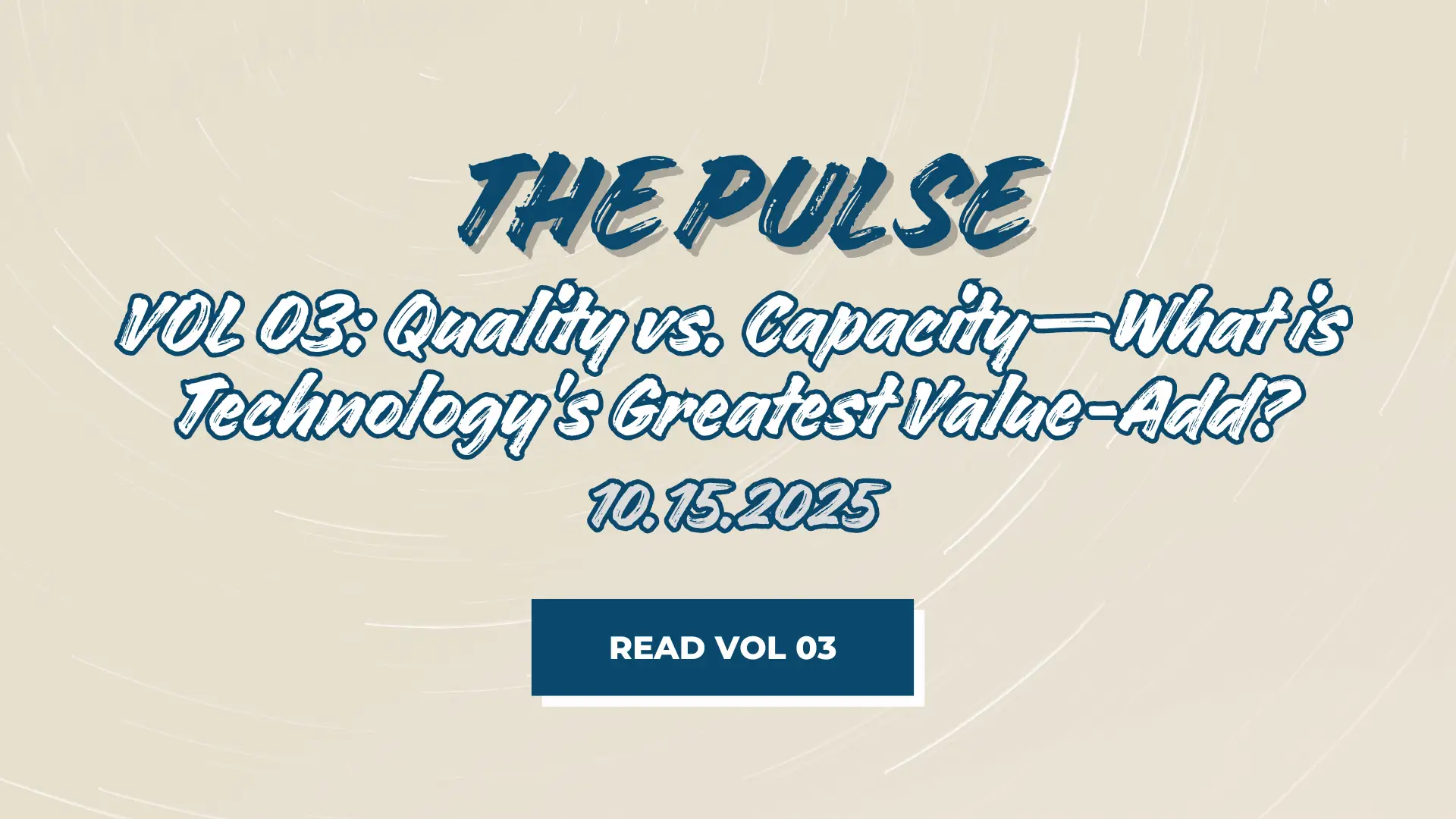Intelligent Document Processing (IDP) combines advanced technologies—including Artificial Intelligence (AI), Optical Character Recognition (OCR), Intelligent Character Recognition (ICR), and Natural Language Processing (NLP)—to accurately identify, categorize, and extract critical data (and contextual insights) from structured and unstructured documents, transforming document-driven processes from manual, time-consuming and labor-intensive tasks into automated workflows that deliver and power enterprise-wide intelligence.
Here at FutureVault, our Intelligent Document Processing engine helps enterprise wealth management and financial services organizations unlock the hidden value within documents by providing a centralized, secure Digital Vault that aggregates, organizes, and leverages document data through sophisticated IDP capabilities.
TL;DR Highlights:
-
- IDP is a force multiplier, materially enhancing operational workflow by reducing and eliminating manual, human intervention in pre-document processing and document processing.
-
- FutureVault’s IDP engine, combined with its award-winning Enterprise, Advisor, and Client Vault solutions, uniquely supports financial service operations and provides a competitive differentiator.
-
- Intelligent Document Processing automates and optimizes the extraction and structuring of data within documents.
-
- Intelligent Document Processing combines and leverages Optical Character Recognition, LLMs, and Natural Language Processing for high accuracy to contextualize the information contained within documents.
-
- Intelligent Document Processing transforms raw data into actionable intelligence and insights across enterprises.
-
- IDP is becoming essential for regulatory compliance, operational efficiency, and enhanced client engagement.
-
- FutureVault’s IDP engine, combined with its award-winning Advisor and Client-facing Digital Vault, is a winning enterprise value proposition within financial services and other industries.
What is Intelligent Document Processing (IDP)?
Intelligent Document Processing leverages Artificial Intelligence technology (LLMs, NLP) and Optical Character Recognition to extract, interpret, and leverage data from structured (forms, tables, most PDFs, etc.) and unstructured (image-based documents, handwritten notes, etc.) documents.
IDP’s sophisticated technology accurately transforms information into structured data formats, making previously untapped, inaccessible, or cumbersome-to-process information immediately available, valuable, and actionable.
When paired with a Digital Vault as the secure document repository for Enterprise, Advisor, and Client documents, IDP becomes exceptionally powerful.
Note: A secure, centralized repository (Digital Vault) for documents can serve as the backbone and force multiplier for IDP by ensuring consistent access to documents, notably including Alpha Content—documents voluntarily provided by clients that organizations would otherwise not have access to.
Intelligent Document Processing: Critical Steps and Components
Intelligent Document Processing is generally made up of three core steps (or capabilities): Identification, Classification, and Data Extraction. However, there are additional critical steps that need to take place on both ends of this workflow to maximize the value and efficiency of IDP.

Step 1: Ingestion of Documents
Documents are captured and ingested through multiple channels and sources, including scanning of physical documents, API integrations, email attachments, or bulk uploads via secure file transfer protocols (SFTP). For example, firms and institutions often ingest client statements from various custodians directly into their Digital Vault and IDP system; firms operating a mailroom service may also receive documents such as agreements, insurance claims, and so forth.
Step 2: Identification of Documents
Once documents are ingested, the next step in the process by IDP systems is to automatically detect and identify document types, such as invoices, tax documents, or client agreements. This ensures each document follows the correct processing path and that additional classification takes place.
Step 3: Classification of Documents
IDP categorizes documents by type, content, or purpose, significantly reducing manual sorting. For instance, invoices can be automatically sorted and directed into payment workflows.
Step 4: Data Extraction
This step extracts critical individual data points (names, amounts, dates) or complete data sets from documents. Outputs are structured into accessible formats like CSV or JSON, enabling seamless integration with existing systems.
Step 5: Validation of Data from Documents
Extracted data undergoes verification through automated checks, driven by confidence intervals, or through manual review queues for lower-confidence data. This ensures accuracy for regulatory compliance and critical business decisions.
Step 6: Distribution of Data and Documents
Validated data is efficiently distributed into various systems, including CRMs, financial planning software, data analytics platforms, or corporate data lakes. Documents themselves can be routed into Enterprise, Advisor, or Client-specific Digital Vaults.
Why Data Extraction is the “Holy Grail” of IDP
The true power of IDP lies in its automated extraction capabilities, unlocking data traditionally trapped within documents.
Organizations—particularly wealth management firms—extracting data and keying in critical information into enterprise systems is both time and resource-dependent. For example, firms can spend hours manually sifting through trust and estate documents to locate data (such as beneficiary details) and enter this into different enterprise systems.
Now, with IDP, this painstaking process shrinks to mere seconds, dramatically cutting costs, eliminating human errors, and significantly improving productivity, all at scale. This means organizations can leverage a goldmine of previously inaccessible insights to drive strategic decision-making and enhance client services.
FutureVault’s Intelligent Document Processing Engine Capabilities
| Feature | Functionality | Benefit |
| AI-Powered Document Classification | Automatically detects document types, sorting and organizing them efficiently, including automatically merging and splitting PDFs. | ✔ Reduces manual sorting, saving significant administrative time. |
| Optical Character Recognition (OCR) & Text Extraction | Converts scanned and image-based documents (including hand-written notes and forms) into structured digital data. | ✔ Streamlines workflows by eliminating manual data entry, reducing errors. |
| Intelligent Data Extraction | Uses AI models (private LLMs) to accurately extract critical data fields with a high degree of confidence and without manual template setup. | ✔ Enables immediate data utilization without complex setup, significantly reducing deployment time. |
| Natural Language Processing (NLP) | Accurately interprets context and meaning within complex documents, providing rich information and actionable insights. | ✔ Ensures precise data extraction, reducing risk of errors in compliance-sensitive documents. |
| Table & Structured Data Extraction | Efficiently converts tabular data into structured formats (JSON, CSV) that can be easily ingested into enterprise systems (CRMs, Data Lakes, etc). | ✔ Enables automated reconciliation, analytics, and reporting tasks. |
| Document Validation & Quality Control | Automatically identifies inconsistencies or missing data within documents. Confidence intervals are applied to our IDP engine to improve accuracy of results. | ✔ Enhances accuracy and ensures compliance, drastically reducing manual quality checks. |
FutureVault’s unique integrated approach—which combines our secure Digital Vault platform with Intelligent Document Processing technology—enables unprecedented data accuracy and insightful analytics by ensuring all critical Enterprise, Advisor, and Client documents are centralized within a single source of truth.
IDP Use Cases in Financial Services
IDP directly addresses and solves specific operational challenges within financial services:
-
- Client Onboarding & KYC: Automatically extracts data from identification and financial documents, significantly reducing onboarding from days to minutes and improving compliance accuracy.
-
- Portfolio Management & Reconciliation: Extracts critical financial data from multiple sources (custodian reports, brokerage statements), automating reconciliation and significantly reducing monthly processing times from days to hours.
-
- Regulatory Reporting & Audits: Streamlines extraction and tagging of data from compliance documents, dramatically reducing audit preparation time and increasing reporting accuracy.
-
- Document & Fee Processing: Standardizes extraction of complex fee structures, automating fee calculations, reducing billing errors by up to 90%, and enhancing transparency.
-
- Tax Document Management: Accelerates tax document processing by automating the extraction of critical data from W-2s, 1099s, and K-1s, cutting processing time in half and ensuring accuracy.
-
- Wealth Transfer & Estate Planning: Automates the extraction of beneficiary and allocation details, reducing manual review from hours to mere minutes, and ensuring quick retrieval.
-
- Client Communication & Retrieval: Enhances service delivery by automating document indexing, enabling advisors to respond swiftly to client document requests.
-
- Mergers, Acquisitions & Due Diligence: Accelerates the extraction and analysis of critical client and contract data during acquisitions, reducing integration timeframes dramatically and improving decision-making accuracy.
Final Thoughts
Intelligent Document Processing, particularly when underpinned by a robust Digital Vault, is transforming how enterprises manage their documentation and data. This combination offers significant operational efficiencies, reduced compliance risk, and unparalleled insights derived from data that was historically inaccessible. For forward-thinking organizations, adopting solutions like FutureVault’s integrated Digital Vault and IDP technology represents a critical opportunity to drive growth, enhance client relationships, and maintain a competitive edge.
Frequently Asked Questions about IDP
-
- How does IDP differ from OCR? IDP adds contextual understanding and advanced data extraction, providing deeper insights beyond basic digitization.
-
- Can IDP enhance regulatory compliance? Yes, by automating data validation and reducing manual intervention, IDP significantly reduces compliance risks.
-
- Is IDP scalable for small businesses? Absolutely. IDP provides value at all scales by automating tasks, enhancing accuracy, and improving operational efficiency.
-
- How does IDP integrate with existing software? Advanced IDP platforms like FutureVault seamlessly integrate through APIs, ensuring efficient data distribution.
-
- Can IDP accurately process handwritten text? Modern IDP systems continuously improve their handwriting recognition capabilities through AI, making them increasingly accurate and dependable.
Relevant links:
Document-Data: The Premium Oil Fueling Enterprise Intelligence
Every Enterprise Needs An AI Strategy: Does Your Organization Have One?





